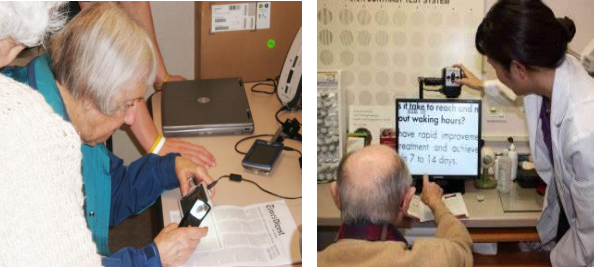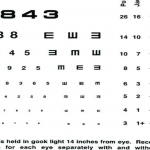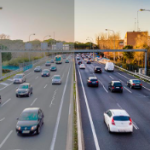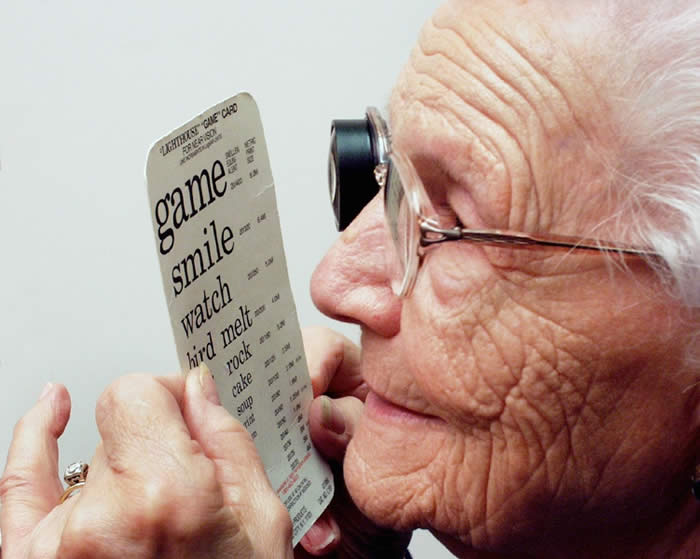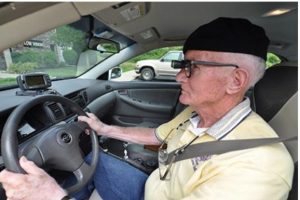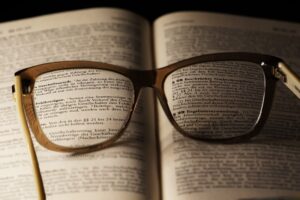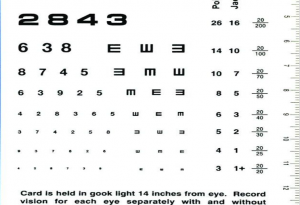The National Eye Institute (NEI) defines low vision as a bilateral visual impairment that is not correctable by standard glasses, contact lenses, medicine or surgery which interferes greatly with a person’s ability to perform his/her daily activities. WHile the Centers for Medicare and Medicaid Services recognize distinct categories of low vision based primarily on best-corrected visual acuity (VA), a much broader range of patients may also be defined as having “low vision” based on compromised visual fields, impaired contrast sensitivity, or other deficits in visual function.
Low vision is only diagnosed when the vision in the better eye after all forms of optical, medical and surgical interventions is still very low and would therefore require a low vision aid which is designed and suited to handle that issue.
A clinical low vision rehabilitation evaluation is a sepcialized eye exam that focuses strictly on visual functions as well as prescribe aides to help maximize the use of the remaining/residual vision. It should be recommended for everyone with visual impairment in collaboration with the required treatment and care needed. These services are best provided by low vision specialists because whereas a GP eye care professional will try to maximize visual capabilities through any and every means necessary, a low vision specialist will preferably focus on how to maximize functional vision which is most affected and/or needed at that moment.
There are 5-steps approach that is used when evaluating and managing low vision to ensure a good-to-optimal result. These includes:
- Understanding
- Effect
- Evaluation
- Prescription
- Follow-up
Firstly, you need to know the cause, type, severity and progression of loss vision, then establish its effect on vision and evaluate to know the amount of vision lost and the amount of vision remaining (residual). After this, the best visual aide needed is then recommended before follow-up sessions are scheduled to ascertain if the visual function/quality of life has been improved.
There are 5 key-areas in quality of life that low vision affects the most. They includes:
- Reading
- Mobility
- Driving
- Emotion
- Recognition
Reading is a difficult vision-dependent activity that is affected by low vision. It is usually worsen-to-impaired based on the cause and its progression. Here, low vision helps to enhance ability and improve environment to improve and maximize reading ability.
Mobility has to do with movement, you need good-to-optimal vision for movement to safe and easy movement. However, due to a reduction in this necessary, it may lead to an increased risk of falls and slip.
Driving is a boost and/or necessity for performing daily tasks that require an all-round optimal vision. Any defect or deficiency in an vision needing area, if not properly handled has its potential effects and/or consequences. Any negative effect in this area can lead to accidents.
Emotion is a very important part of psychology. It deals with the manner and/or reaction we display towards activities and events by means of facial expressions, gestures and/or behaviour. Low vision tends to affect emotion, with extent of effect being determined by type and/or severity of the causative disease. This eventually causes anxiety and depression in a long run, especially in cases of little to no improvement. There is need for an integration of mental health services with low vision rehabilitation, if a positive improvement of emotion is desired.
Recognition has to do with identifying faces and/or facial expressions. This is also an important part of a person’s quality of life which can be affected by low vision. This tends to interfere mostly with social interactions and/or relationships and then it affects emotion.
It is essential to make sure that the 5 steps-approach is used and the 5 key-areas are improved upon and preserved when rendering low vision and rehabilitative services.
Few people are totally with sight since most people diagnosed or categorized as blind actually have some residual vision left and therefore fall into the low vision category. But thanks to low vision rehab, its feats and advances, many of them can improve their vision and hence improve their quality of life.

